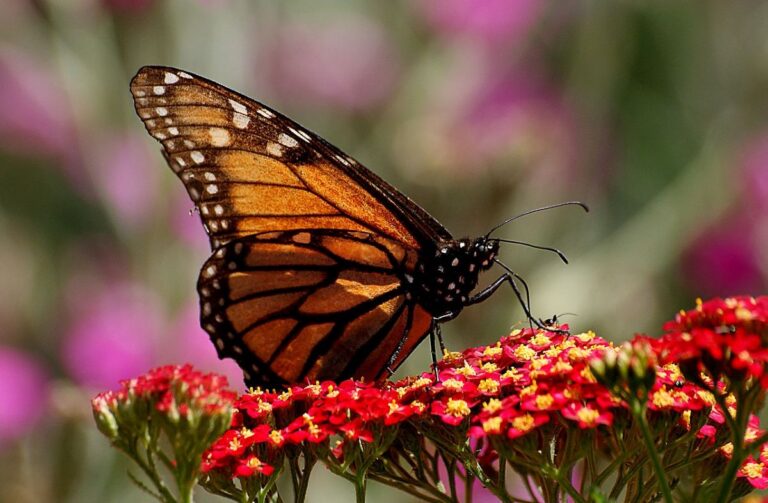Jewish Symbols And Their Meanings
The Jewish faith, sometimes referred to as Judaism, is one of the world’s oldest religions. Judaism is also considered to be the world’s first monotheistic religion. It is said to be more than a belief system; it is a way of life for those who practice it.
Apart from offering formal religious teaching, Judaism is a holistic worldview that takes into account the nature of existence, the role of a human being in the universe, and the relationship between a human being and his or her family, friends, mentors, and the Creator.
There are numerous symbols associated with Jews and Judaism that people all around the world recognize, ranging from the Star of David and menorah to the hamsa hand sign.
Symbols and holy items pervade Jewish life, serving as visual and tangible representations of the various noble concepts and ambitions that cannot be adequately communicated through words. Many of these traditional symbols can be seen in Jewish homes and synagogues worldwide.
Not all of these symbols, however, are created equal in terms of purity or meaning. Several of these have a clear religious requirement, as well as religious meaning.
Some are merely traditional but are extensively practised and well-known to the general public.
Others, such as the number symbolism, food symbolism, and animal symbolism, are more inclusive in character than the highly specific ones, such as the menorah or mezuzah.
Jewish Symbols And Their Meanings

If you are interested in Judaism and wish to learn more about Jewish symbols, the following will enlighten you about their history, as well as their significance and meaning in Jewish culture.
1. Dreidel Symbols

Every Jew knows what a dreidel is. It’s a spinning top with four sides, played during the famous Jewish festival called Hanukkah, also known as the Festival of Lights.
Yiddish-speaking Jews gave the name “dreidel” to the spinning top and the game. The term came from the German word “drehen” which means “to spin.” They also replaced the letters with their Hebrew counterparts.
The new letters on the dreidle mean the same, but “G” became gimel or “all,” “H” became hey or “half,” “N” became nun or “nothing,” and “S” became shin, meaning “put in.”
These Hebrew letters inscripted on the dreidel’s sides make up the acronym for the Hebrew saying “Nes Gadol Hayah Sham,” which can be translated as “A great miracle occurred here.
This is in reference to the miracle which is what Hanukkah is all about, which is the recovery of Jerusalem and the subsequent rededication of the Second Temple.
Spinning a dreidel is part of the Hanukkah celebration. It is spun to see what letter it lands on. While spinning, the dreidel symbolizes our lives.
This signifies that we “spin” our lives in circles until we eventually attain the awareness that only when we all spin ourselves together around a common goal to unite as one will we achieve true happiness and harmony, and realize the purpose of our existence.
A dreidel, also spelled “dreidle” or “dreidl,” is a spinning top bearing an inscription of 4 Hebrew letters around its sides. These letters – N, G, H, S – make up the acronym for the Hebrew saying which means, “A great miracle occurred here.”
Most scholars claim that the dreidel may have originated from the English spinning top called a teetotum that dates back to ancient Greek and Roman times.
The dreidel is a famous Hanukkah custom. Today, Jews play the dreidel game as a way to celebrate their rich history. It also serves as entertainment among friends and family.
To learn more about this Dreidel Symbols, click here.
2. Menorah Symbol

The Hebrew word “menorah,” also spelled “menora,” means “lampstand.” It is a seven-branched candelabra used in Jewish religious rituals.
The original seven-branched menorah was found in the desert sanctuary and then later in the Temple in Jerusalem. The menorah has been a prominent symbol in Israel since. It was popularly featured in religious art by the ancient Jews.
The seven-branched menorah has always symbolized Judaism. It has become the religion’s most important icon, being stamped on coins and engraved on tombs, as well as inscribed on synagogue decorations, jewelry, and even sundials.
Ancient Jews interpreted the menorah’s seven branches as representative of the five visible planets, the sun, and the moon. Its rounded branches are interpreted as their trajectories across the heavens.
Some have interpreted that the seven brances of the menorah signify the number 7, which is a key number in Judaism.
To learn more about this Menorah Symbol, click here.
3. Hamsa Symbol

The hamsa is also called khamsah, an Arabic word for “five.” It also means “the five fingers of the hand.” Its Hebrew equivalent is “hamesh.”
The number 5 has sacred connotations in Judaism, symbolizing one of God’s names as well as the Torah’s five holy books.
Other names given to this open-hand symbol includes the Fatima Hand, the hand of Mary, the Hand of Miriam, and the Hand of the Goddess or the Hand of Venus/Aphrodite.
The hamsa is generally believed to be a symbol of protection against the evil eye but serves as a good luck symbol for health, wealth, and happiness as well.
The hamsa symbol bears different meanings to different cultures. However, the common belief is that it is a symbol of protection which also bestows good health, happiness, and good fortune to its owner.
In the Islamic tradition, this symbol is referred to as the Fatima Hand, named after the daughter of the Islamic prophet Mohammed.
In other cultures, symbols of divine protection based around this open-hand symbol include the Hand of Mary, the Hand of Miriam, and the Hand of Venus or Aphrodite. They were employed as protection for women against the evil eye. The symbols were also said to enhance fertility and lactation, healthy pregnancies, and good health in general.
The hamsa is often decorated with an eye which represents that it sees everything and watches out for the hamsa wearer or owner, protecting them against everything evil.
4. Star Of David Symbol

The hexagram symbol is believed to have been adopted by the Jews from the Hindu chakra symbol Anahata, or the heart chakra.
The symbol was first employed as a religious sign by Arabs during the medieval period.
However, this particular representation was known as the Seal of Solomon, which was depicted as either a pentagram or a hexagram, and which was later used by Jewish Kabbalists in protective amulets called “segulot”.
In Christianity, this hexagram-shaped symbol is sometimes referred to as the “star of creation.”
The Star of David are sometimes found in stained-glass windows of some Christian churches. One of the oldest existing examples of this can be found in Winchester Cathedral in England. It has been featured in one of the canopies of the choir stalls since about 1308.
In other Christian sects, the Star of David symbol is representative of God reaching down to man and man reaching up to God, which is the union of Heaven and earth.
It is also used as a representation of the quorum of the twelve apostles as mentioned in the Book of Revelation, where the Church is represented by a woman wearing a crown of twelve stars.
The hexagram symbol may also symbolize the Tribes of Israel and their friendship and affinity towards the Jewish people, as well as a symbol for the Big Dipper that points to the North Star, which is a symbol of Jesus Christ.
The hexagram or six-pointed star, known as the Jewish Star, the Star of David, and the Shield of David, is the most iconic and recognizable symbol in Judaism. It is a prominent feature of the Israeli flag and represents Jewish communities worldwide. It is also used to express Jewish affiliations in sports.
The Hebrew name for this symbol is Magen David, also spelled “Mogen”. In the Jewish prayer book called Siddur, the term “Shield of David” is also used as a title of the God of Israel.
This symbol, however, is not uniquely Jewish. The Star of David is also employed in Christianity, especially the Church of Jesus Christ of Latter-day Saints which uses the symbol as an architectural feature.






